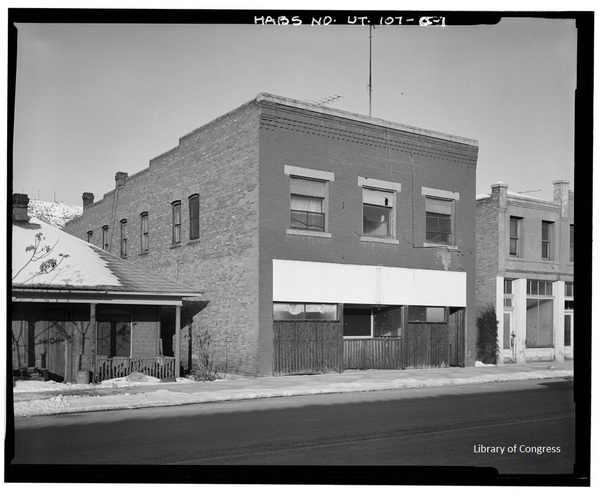Dublin Core
Title
Description
Sitting in the second floor windows of Helper’s Carbon Hotel, working women combed their hair hoping to entice paying customers into the bordello. In mining towns throughout rural Utah, populations of workers boomed and brothels followed demand -- showing that prostitution wasn’t just an urban vice. When Helper’s last bordello closed in the mid-1970s, it ended a decades-long tradition of the police overlooking prostitution in their rural community.
Located in central Utah's Carbon County, the town of Helper was a melting pot of recent immigrants. Its convenient location to coal mining camps and farms allowed the town to steadily grow throughout the twentieth century. Saloons, coffee houses, and brothels opened to provide services for a diverse workforce of coal miners. Carbon County came to be known for its three vices: gambling, drinking, and prostitution. A 1944 news report counted three brothels and fourteen casinos! While periodic police raids resulted in arrests, the houses of ill repute remained open.
The Carbon Hotel was a popular hotel, bar, and cafe located on Helper’s Main Street. The second floor housed the popular -- but technically illegal -- bordello. For decades, sex workers brought men upstairs to the small, candy-colored rooms to provide their services. The men working in mines or on the railroads offered a regular customer base for the brothel. But, it wasn’t just local residents patronizing the business. Some Helper residents remember seeing famous actors and high-profile out-of-town politicians spending time at the Carbon Hotel.
The enduring popularity of prostitution in Helper was overlooked by local authorities for much of the twentieth century. Despite the occasional raid, most brothels were protected by a cooperative relationship between the madam and local businessmen. Generally, if the workers and the customers behaved, authorities would look the other way.
Eventually the coal industry in Carbon County declined. As miners moved away from the area, businesses on Helper’s Main Street closed their doors -- including the brothels. This, combined with a renewed interest in prosecuting prostitution threatened the livelihoods of Helper’s sex workers. The Carbon Hotel hung on until 1976, when pressure from local authorities finally closed the bordello for good.
Creator
Source
_______________
See Andrew Dash Gillman, “A Walking Tour of Helper, Utah,” in Ronald G. Watt, A History of Carbon County, (Utah State Historical Society), 1997; Kim Hancey Duffy, “Historic Helper Main Street,”Utah Preservation (vol.7), 2003; Richard Markosian, “Helper’s Brothel and Mining History: According to Tino,” Utah Stories, Oct. 7, 2010; Philip F. Notarianni, “Helper - The Making of a Gentile Town in Zion,”Carbon County: Eastern Utah’s Industrialized Land, 1981; Matt Warner, “Carbon Hotel,” Historical Marker, 1988; Brittany Green-Miner, “Exhibit Showcases the Shadier Side of Helper, Utah” Fox 13 News, Jan. 29, 2012; Mark Eddington, “Law and Religious Leaders Pilloried and Profited off of Prostitutes in Early Utah,” Salt Lake Tribune, July 17, 2023; Eileen Hallet Stone, Selling Sex in Utah: A History of Vice (The History Press), 2023.

